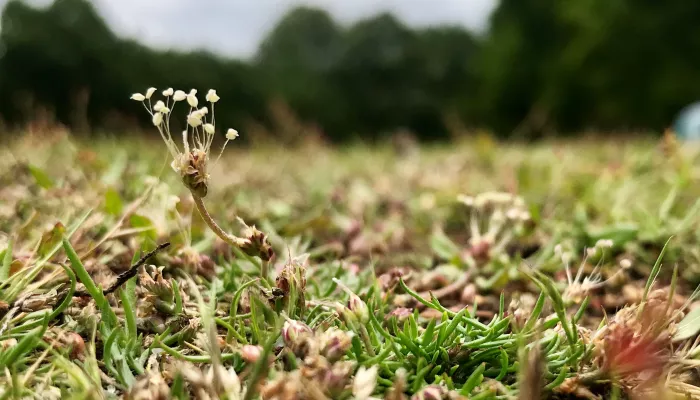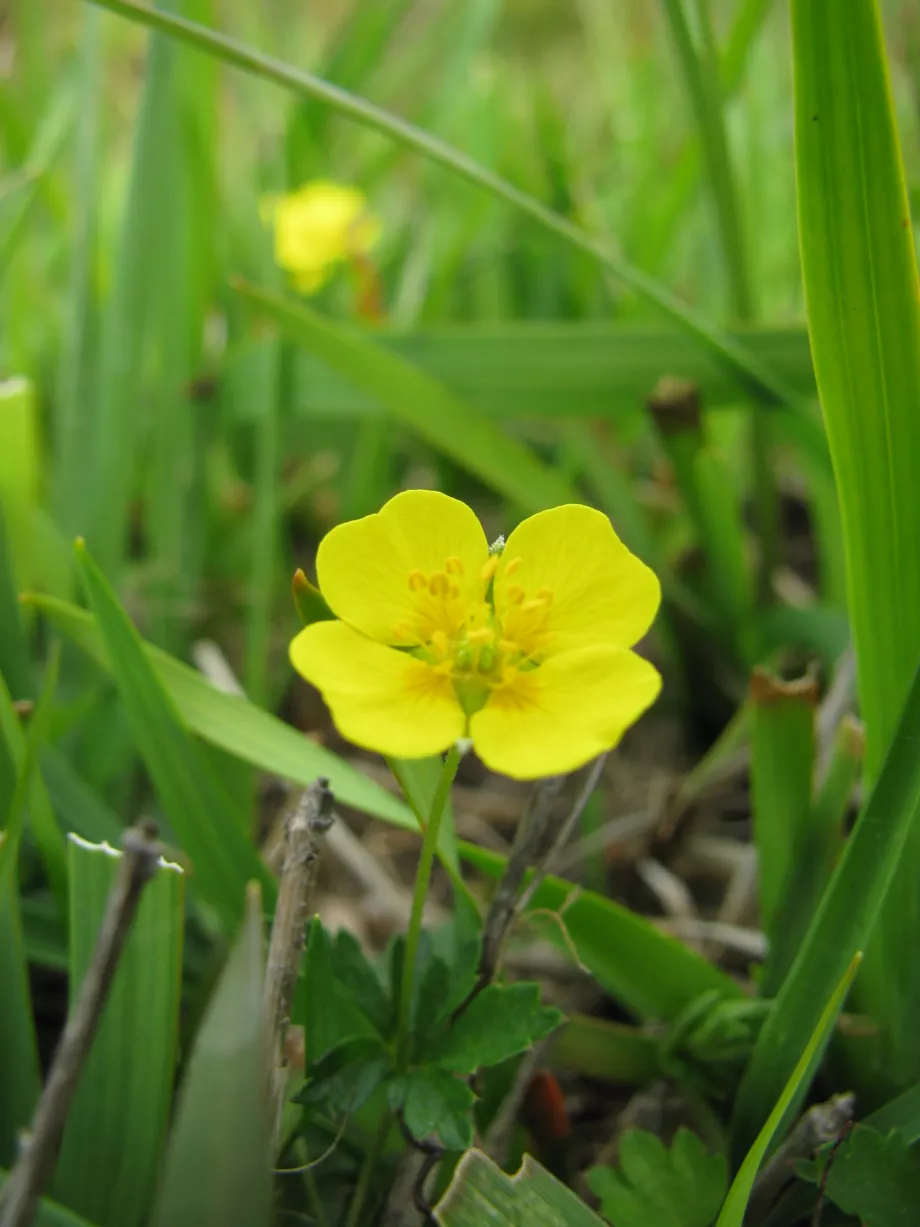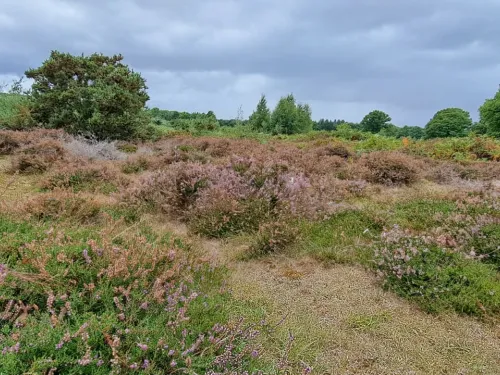
Hothfield Heathlands in November: Full of colour & life
Long-time volunteer Margery Thomas explores what Hothfield Heathlands is like on a crisp November day.


Another plant that tolerates footfall but is less obvious is the buck’s horn plantain, Plantago coronopus, which occurs at the top of the slope leading to the former football field, where it enjoys thin dry gravelly conditions. The downy leaves are usually divided, resembling stags’ antlers. Coronopus is Greek for crow’s foot. They grow in a low rosette and are edible, crunchy and tasting of spinach. A nice foil for the vinegary leaves of the dwarf sheeps’ sorrel, Rumex acetosella, that covers the nearby slopes with a haze of rusty flowers in early summer. This plantain produces dense spikes to 7 cm of tiny flowers from May to July, the protruding yellow anthers giving it a fluffy appearance, the whole plant resembling a tiny baroque candelabra. It has also adapted to roadsides where salt accumulates. All plantains are important sources of pollen and/or food plants for caterpillars of butterflies and moths; they make a good addition to wildlife-friendly gardens. Hoary plaintain, Plantago media, has fragrant flowers and plantain leaves are good for nettle stings.
The ling is a food plant for the hairy caterpillars of the oak eggar moth, whose caterpillars then shelter in the leaf litter below through winter. The eggs, caterpillars and pupae of many insects and butterflies and moths are now hidden everywhere, on undersides of leaves, on grass stems, in cracks in bark, in ground litter, here and in gardens. Leaving some areas of the garden untidy will protect the next generations of our endangered insect and butterfly populations.
Meanwhile, ticks are still active, hanging off grass stems or bracken in those shoulder-high tunnels to catch onto whatever is walking past. So keep to open paths and remember to check dogs and yourselves. The NHS website has information on safe tick removal.
Please shut the pedestrian gates that you use. Please keep dogs close to you at all times, let’s give our ground nesting birds a chance, do not let your dog run and play off the paths and through the areas of heather and gorse. Don’t forget to take poo bags to the bins at the entrances.
Ian Rickards, Area Manager

Long-time volunteer Margery Thomas explores what Hothfield Heathlands is like on a crisp November day.

Area Manager, Ian Rickards, takes a moment to reflect on the work at Hothfield Heathlads throughout the summer months.

Pigs and tree pipits have returned to the reserve. Hazel and Beech, the pair of Large Black pigs who in the winter made their mark on the small compartment below the concrete causeway, returned to that fenced-in compartment in mid-July continuing, as Area…